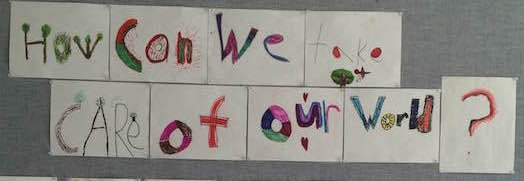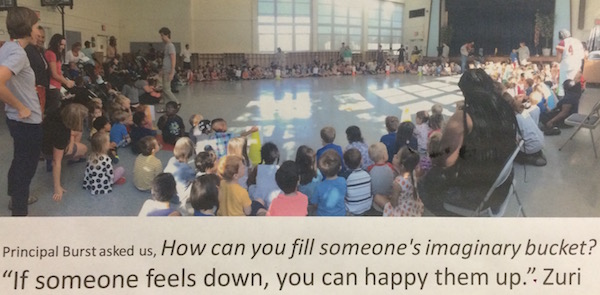
Creating a Community of Kindness
At SWS, we strive to create a community of caring and kindness by intentionally fostering caring interactions between and among our children, staff and families. Our community meetings are one tool we use to teach, model, and reinforce the values and behaviors of caring and kindness. During community meetings students experience self in relation to others, as well as the power, joy, and challenges of belonging to a caring community.
Community Meetings Foster Caring & Kindness
We have two kinds of community meetings:
- Weekly classroom meetings provide students a structure and routine to practice skills for effective communication and problem solving.
- Monthly schoolwide meetings are 30-minute gatherings by all students and staff to share stories and thoughts on the month’s topic, which often focuses on how we treat others and the world around us.
The main goals of community meetings (both in the classroom and all-school) are to create a caring and ethical community where:
- Everyone feels invested in supporting and protecting a community of caring.
- Everyone feels a sense of belonging in the community.
- Everyone’s individuality matters.
- Everyone in the community feels empowered and supported with tools and shared language to solve problems and connect with others in an ethical and caring manner.
- There is a shared explicit understanding of the norms for a caring community, with visible structures, shared language, and consistent practices.
Classroom Community Meetings
The weekly classroom community meeting is central to creating a schoolwide culture of caring and kindness. Classroom community meetings provide students a structure and routine to practice skills for effective communication and problem solving. Students cultivate awareness of how they impact each other, as well as learn and practice communication skills to articulate, reflect, and problem solve social frustrations. (Read about the value of community meetings from Principal Burst’s perspective.)
Classroom community meeting is held regularly, usually once a week. During the first 8 weeks of school, the teacher will introduce the students to the basic structure of community meeting, and the consistent practices that will be used in fostering school wide caring norms such as:
- Giving an Appreciation
- “Can I Play?” “ SURE!”
- Making a Request (or, Making an Agreement)
- “Let’s Work it Out”
- Standing up to Teasing, Exclusion, and Unkind Behavior
- When to Seek Adult Help
Classroom community meetings are also held as-needed to address topics within a classroom that arise and warrant targeted attention, such as a student feeling teased or excluded. The classroom meetings allow students to feel there is a safe and predictable forum for speaking up and getting help with an issue. As well, they are often a time for enjoying appreciations and recognition of the positive impact of creating a caring community.
Schoolwide Community Meetings
Once a month, we gather in the multi-purpose room for 30 minutes for a Schoolwide Community Meeting. This is centered on a shared monthly topic — a “Community Provocation” — that is generated by students and teachers. Classrooms take turns creating the monthly provocation and hosting the community meeting. (Read about how the second graders developed the topic in November, “How can we take care of our world?”) The lead class or grade level presents the provocation in some way by sharing a related poem or story, and there is time for others to contribute their thoughts. We have a moment of quiet reflection to think about the provocation, and we enter and leave the meeting with shared singing.
Each month, the topic (or provocation) is posted throughout the school, and often, in Library Ms. Ochmaneck will share stories that relates to the monthly provocation.


